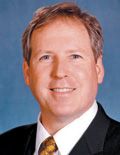- Acne
- Actinic Keratosis
- Aesthetics
- Alopecia
- Atopic Dermatitis
- Buy-and-Bill
- COVID-19
- Case-Based Roundtable
- Chronic Hand Eczema
- Chronic Spontaneous Urticaria
- Drug Watch
- Eczema
- General Dermatology
- Hidradenitis Suppurativa
- Melasma
- NP and PA
- Pediatric Dermatology
- Pigmentary Disorders
- Practice Management
- Precision Medicine and Biologics
- Prurigo Nodularis
- Psoriasis
- Psoriatic Arthritis
- Rare Disease
- Rosacea
- Skin Cancer
- Vitiligo
- Wound Care
Article
EHRs move past infancy
When it comes to electronic health record (EHR) implementation, dermatology isn’t at the beginning - the naive stage - or at the end - where the technology is doing what it’s supposed to do. Dermatology is in what one might call the teenage years, an awkward, frustrating, but hopeful, time.

When it comes to electronic health record (EHR) implementation, dermatology isn’t at the beginning - the naive stage - or at the end - where the technology is doing what it’s supposed to do. Dermatology is in what one might call the teenage years, an awkward, frustrating, but hopeful, time.
“I think most of the problems we’re seeing with EHRs are the result of the fact we are in a transition period,” says Mark Kaufmann, M.D., chairman of the American Academy of Dermatology’s Electronic Health Record Implementation Taskforce.
EHR snapshot
The EHR landscape hasn’t changed drastically since we reported on making the switch from paper to electronic last year. An AAD survey for 2012 shows a small increase from 36 percent in 2011 to 41 percent in 2012 in the number of solo dermatology practices acquiring EHRs. And while 48 percent of dermatologists surveyed said in 2011 they had no plans to acquire an EHR, 44 percent said the same a year later.
Where there has been a notable change is in the dermatology group practice arena. In 2011, 36 percent of dermatology groups surveyed had acquired EHRs. A year later, nearly half of those practice types were onboard with the technology. Still, 22 percent of group dermatology practices report in the latest survey they have no plans to buy EHRs.

Martin N. Zaiac, M.D., dermatology chairman at Florida International University and director, Greater Miami Skin and Laser Center, Miami Beach, plans to acquire a system. While he says he’d like to get in on the government’s incentive program early on, it’s not worth it to him to risk buying the wrong EHR. He says he hears a lot of dissatisfaction among dermatologists who have EHRs. In fact, according to the academy’s 2011 EHR satisfaction survey, only 14 percent of dermatologists surveyed strongly agreed that they were satisfied with their EHRs. More than a third disagreed or strongly disagreed that they were satisfied.
“(A lot of the systems out there were) designed by non-dermatologists,” Dr. Zaiac says. “Dermatologists are discerning consumers and keen observers. We must employ these skills when choosing an EHR system, as it may be one of the most important business decisions we make.”
Bumps big and small
It’s not only dermatologists who are working out EHR kinks, but also the government.
A practice that many doctors probably view as time-saving when entering EHR data could get them an audit, for potentially up-coding.
“The ... HHS (Health and Human Services) is saying they are going to come after users of EHRs and audit them for cloned notes (you can have notes cloned under one patient or across a diagnosis),” Dr. Kaufmann says. “So, we’ve gone from a time when people said, ‘Do you think they’ll start auditing you if you’re not using EHRs?’ To a time when if you’re using an EHR, you’re more likely to get audited.”
Like other bumps, this one will work its way out, according to Dr. Kaufmann, an associate clinical professor in dermatology at the Icahn School of Medicine at Mount Sinai, New York.
“We have to step back and look what we can do to fix this; avoid it,” he says.

David Hunt, M.D., medical officer, Office of the National Coordinator for Health Information Technology, HHS, says whether physicians are using EHRs or paper records, the standards of professionalism and individual service prevail.
“If it is appropriate to use the same terms, elements and fields, syntax and same wording for a specific patient, across patients or for additional visits, that’s a judgment that each physician would have to make,” Dr. Hunt says. “But we do have to be cognizant of the fact that it will raise at least a question about whether or not you really did look at something or do something.”
Speaking of audits, the Office of Inspector General is concerned that the government’s own Centers for Medicare and Medicaid Services has done a poor job verifying that physician offices have met the requirements for meaningful use, Dr. Kaufmann says. So, the government will conduct audits among those practices that have received money to make sure they’ve complied.
One glitch might work to the advantage of dermatologists who were early EHR adopters, Dr. Kaufmann says. CMS has delayed implementation of stage 2 in meaningful use for a year - making 2013 a stage 1 year.
“What that has done, actually, is it has given a little boon to the early adopters because those who attested in 2011 got $18,000. If you attested in 2012 for your second year, you got another $12,000. If you attest for 2013, you’ll get $8,000. So what that means is that people who attested first in 2011 will actually be able to get $38,000 of the $44,000 without going to stage 2,” Dr. Kaufmann says.
There’s more…
Dermatology-specific concerns include, ironically, that systems are not necessarily dermatology specific.
“Glitches in dermatology programs are that the majority of (EHRs) are written from a primary care standpoint,” says Marc A. Darst, M.D., a Charlotte, N.C., dermatologist who is on his second EHR. “Dermatology is a very small subspecialty, compared with internal medicine, family medicine and pediatrics. We often make our diagnosis in an instant; whereas an internist takes a long history and involved examination to reach a conclusion. Thus, the (EHRs) drive you through the traditional SOAP style note from beginning to end.”
Those who invest in systems they don’t like have a few choices, according to Dr. Kaufmann.
“You can use (the EHR) as a glorified practice management system and go back to paper, which a lot of people seem to be doing. You can shut it down, take a loss and buy a new one, or you can … consider going to a cloud system EHR, so you don’t have to put out all this money upfront to make the network in your office to the specs of that company. You basically just have to have Internet access and you utilize their information technology,” Dr. Kaufmann says.

Dermatologist Srdjan Prodanovich, M.D., Naples, Fla., was so frustrated after getting his first EHR in 2006 that he founded EZ Derm, a derm-specific, cloud-based, iPad-powered EHR. He launched EZ
Derm at the AAD's annual meeting in Miami Beach, Fla.
“Current EHRs’ solutions continuously repeat several major flaws in their design. First, they are based on antiquated and costly hardware and software solutions that were developed in the ’90s, prior to the era of Internet and consumer technology boom. Consequently, practices have to purchase and maintain expensive servers and desktop computers. Second, these solutions lack mobility that is not only essential for busy, high patient-volume dermatology offices but also our social lives. In fact, we may spend more time documenting our patient encounters than being with our families,” Dr. Prodanovich says.

Cloud systems are the wave of the future, dermatologists say. Since you’re basically renting a cloud system, you don’t have to worry about your office system breaking. If your office Internet goes down, that could be a problem, however.
“What we advise is for people to have redundant Internet going into their offices, or actually if you’re using a system that utilizes the iPad, you can actually get cellular subscription on the iPad,” Dr. Kaufmann says.
There’s light
The options for dermatologists are improving, as more specialty-specific EHRs become available, including EZ Derm, NexTech and Modernizing Medicine’s EMA.
Newer technologies accommodate dermatology’s visual needs with iPad technology, where dermatologists take a photo, which drops into the patient’s chart. EZ Derm is among the new technologies that provide anatomically accurate 3-D body maps, on which dermatologists can make notes using touch, handwriting and voice applications. EZ Derm can decipher physicians’ handwriting, abbreviations - even heavy accents. And the system speaks back.
Having the option of renting versus buying a new system addresses a big concern for dermatologists and other types of physicians.
“The cloud is really important. It allows you to decrease the cost in your office as well as be able to cut the rope if you have to, without feeling the guilt of having spent a tremendous amount of money,” Dr. Kaufmann says.
While he admits EHR implementation is not trivial for any practice, Dr. Hunt says practices and groups are turning the corner on EHR productivity. Because now, he says, everyone in the office can be working on a chart simultaneously. Gone are the days when a physician would hold onto a chart and halt all productivity.
“So, while the old adage was that these systems slowed you down, the new watch word that we’re finding is when implemented well and thoughtfully, it can actually make you faster and more productive in the practice,” Dr. Hunt says.
EHR reality

Dr. Hunt says it’s important for all physicians to understand this technology isn’t going away.
“It is incumbent upon every specialty to use the technology and techniques that are best suited for the care of their patients,” Dr. Hunt says. “And right now we’re clearly seeing that reporting information using electronic health records - documenting patients’ visits - is definitely a technology that is advancing and everyone needs to look at it.”
When financially calculating whether or not it’s worth it to get an EHR, dermatologists should almost ignore the meaningful use incentive money. Rather, they should think about how not having an EHR may impact them in 10 years, Dr. Kaufmann says.
“The government is adding a couple of percentage points here and there and, before we know it, we might be looking at a 10 percent cut in our Medicare reimbursement if we’re not fully onboard with these programs,” he says, referring to the physician quality reporting system and more.
“It could be the EHR is the centerpiece that could help you ... participate in the other programs,” Dr. Kaufmann says.
But brace yourselves, because the teenage years are far from over, according to Dr. Kaufmann. He predicts colleagues will be reaping the real benefits of the automated technology in not five, but 10 years. Not only will practices be accustomed to using EHRs by then, but the technology will have become more valuable, with enhanced clinical decision-making tools and greater interoperability. DT
Newsletter
Like what you’re reading? Subscribe to Dermatology Times for weekly updates on therapies, innovations, and real-world practice tips.
















